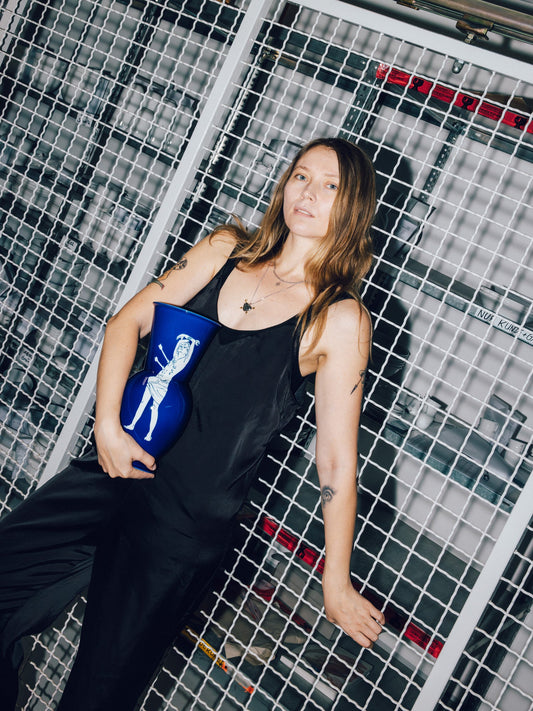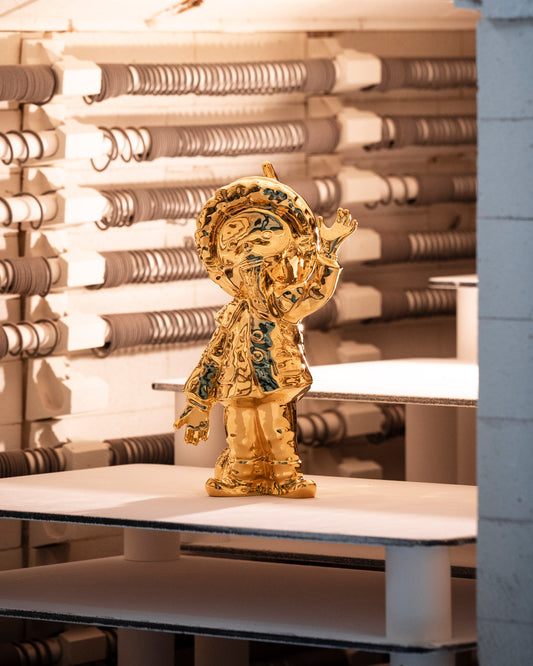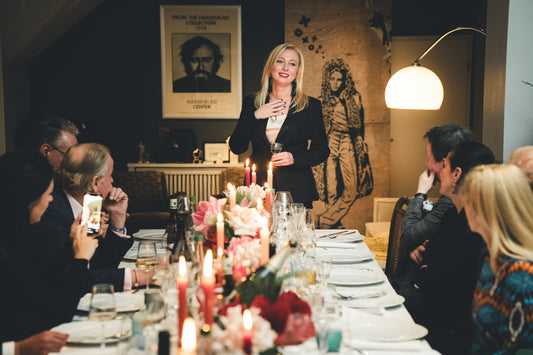PORCELAIN PAINTER THROUGH THE AGES
By chance, we came across a newspaper report entitled "In the fight against male prejudice", in which an artist named Elisabeth von Eicken was portrayed. The interesting biography of the artist caught our attention and we set about researching her. We found out more in an exchange with KPM archivist Claudia Tetzlaff. Elisabeth von Eicken also painted KPM porcelain, but not - as is common today - as a porcelain painter trained at the Berlin manufactory. The artistic director of the manufactory, Professor Theodor Schmuz-Baudiss, gave painting classes for young women from good families at the School of Arts and Crafts, which she probably attended. So the profession of porcelain painter did not even exist at the beginning of the 20th century?
Porcelain painter Anette Reimann at work
The path to porcelain painting as a profession was far from being paved for women; the costly and lengthy training was better invested in male applicants. Women were expected to marry early and take care of the household and children. The - now outdated - role model of the male breadwinner of the family persisted for a long time: until 1977, the husband had to give his consent if his wife wanted to pursue a career. Even in the 1980s, the Berlin manufactory received bonuses from the Chamber of Industry and Commerce if women were trained as "porcelain painters".
Against this background, it is not surprising that men dominated in artistic or craft professions. At the same time, the profession of porcelain painter was considered strenuous due to the piecework and one-sided physical strain that had existed since the beginning. While the left hand (as a right-hander) held the porcelain and supported it against the painting desk, the right hand had to apply the paint with brush and feather in elaborate decorations on services and vases without trembling. An understanding of the composition of metal oxide paints and their reaction when fired is a prerequisite. Tight deadlines for orders can create additional time pressure.
Trude Petri designed decors for KPM Berlin from 1929 onwards
After the First World War and the experience that a large number of well-trained specialists were temporarily unavailable due to military conscription - or in the worst case scenario - did not return from the war, women were also trained in painting. Ursula Böhme, Anneliese Heidenreich, Else Möckel, Sigrid von Unruh and Luise-Charlotte Koch began their training in 1938/39. Trude Petri, who was hired as a ceramist at KPM Berlin in 1929, was also involved in porcelain painting and designed decorations herself. However, women in painting were still a minority in a male-dominated environment.
It was not until the 1970s/1980s that there was a shift towards more and more female applicants interested in the craft. In 2022, female porcelain painters are clearly in the majority at Königliche Porzellan-Manufaktur Berlin GmbH.


